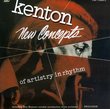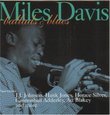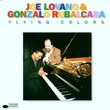| All Artists: Christopher Hogwood, The Academy of Ancient Music Title: Wolfgang Amadeus Mozart: The Violin Concertos - Simon Standage / The Academy of Ancient Music / Christopher Hogwood Members Wishing: 0 Total Copies: 0 Label: Polygram Records Release Date: 12/5/1991 Genre: Classical Styles: Forms & Genres, Concertos, Historical Periods, Classical (c.1770-1830), Instruments, Strings Number of Discs: 2 SwapaCD Credits: 2 UPC: 028943304528 |
Search - Christopher Hogwood, The Academy of Ancient Music :: Wolfgang Amadeus Mozart: The Violin Concertos - Simon Standage / The Academy of Ancient Music / Christopher Hogwood
 | Christopher Hogwood, The Academy of Ancient Music Wolfgang Amadeus Mozart: The Violin Concertos - Simon Standage / The Academy of Ancient Music / Christopher Hogwood Genre: Classical |
CD DetailsSimilarly Requested CDs
|
CD ReviewsFrom the review in Gramophone Record Collector | Mons, Belgium | 09/20/2005 (5 out of 5 stars) "Considering that almost all of Mozart's other orchestral works are available in period-instrument performances, the hugely popular violin concertos have waited surprisingly long for their recorded debut on authentic instruments. And, as one might have predicted, the first in the field is the British violinist Simon Standage, leader of the Salomon Quartet and soloist in acclaimed recordings of Vivaldi and Bach. His pure, slender tone (with vibrato reserved only for specific expressive effect), delicate, precise articulation and rhythmic subtlety make for fresh and inspiriting performances of music that has so often been drenched in an excess of opulence and sophistication.
The relatively slight First and Second Concertos suffer most from high-powered virtuoso treatment; and both seem to me to come off especially well here. The crisp, springing opening tutti of K207, with horns ringing through the texture, augurs well for the contribution of Hogwood and the AAM; and throughout the set the orchestral accompaniment (which includes a harpsichord continuo) is vital and light-footed, with Hogwood revealing a sharp ear for inner detail and achieving a close, chamber-musical rapport with the soloist. Among the other particular pleasures in K207 are the elegantly shaped bravura passagework in the outer movements (no suspicion of slick virtuosity here) and the gentle eloquence of the Adagio, with the sighing appoggiaturas given their expressive due; and here, as elsewhere in the set, Standage adds his own stylish, unostentatious ornamentation in the reprise. I also especially enjoyed K211's opening movement, where Standage's airy articulation brings a wit and skittishness to the rapid triplets that elude most performers on the modern violin. Of the last three concertos, which rank with symphonies Nos. 25 and 29 as the finest fruits of Mozart's teens, K216 strikes me as almost unreservedly successful. The combination of the soft-toned period flutes and muted strings makes for ravishing sonorities in the central Adagio; and Standage gives a poised, slightly understated reading, with less emphasis on a seamless sostenuto line than in modern performances (and a less pronounced rallentando on the soloist's initial rising arpeggio), but full of refined detail and a subtly expressive use of vibrato. The 3/8 sections of the finale, which can often sound distinctly beefy in conventional performances, have a puckish lightness and grace here. And, as throughout the set, Standage's cadenzas in this concerto are a model of style and brevity, making the familiar cadenzas by Franko, Joachim and others, with their harmonic cleverness and orgies of double-stopping, seem all the more inflated by comparison. In K218 Standage's differentiation between the staccato quavers in the first bar (marked by Mozart with dashes) and those in bar three (marked with dots) is characteristic of his fastidious attention to detail throughout these performances. If the Adagio of K219 emerges as a shade too brisk and lightweight, with no registering of the moments of special harmonic intensity (at 4'25'' and 5'54''), the outer movements are superbly done. The first has a fine rhythmic stride but, with the gentler tone and attack of the gut-strung violin, quite lacks that fierce, hard brilliance it can easily acquire in modern-instrument performances. A major here has something of the radiance of Mozart's later masterpieces in this key; and the finale is notable both for the way Standage brings out the witty rephrasings of the minuet theme and for the extraordinary vividness of the 'Turkish' section (from 3'27''), with its ferociously accented tuttis and suggestion of gipsy abandon in the solo part. This is certainly the most excitingly visceral rendering of this music I have ever encountered. But though I shall not be discarding versions by the likes of Grumiaux and Szeryng, I shall often return to these stylish, graceful and unaffected readings, with their revelations of phrasing, texture and colour and their uncommon feeling for Mozart's dance rhythms. The recording, made in London's Abbey Road studios, combines clarity and warmth, and there is an ideal balance between soloist and orchestra. " |







